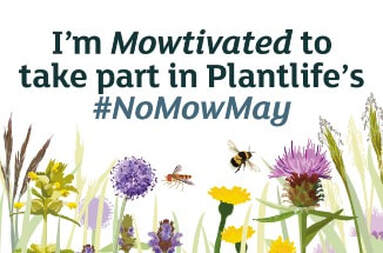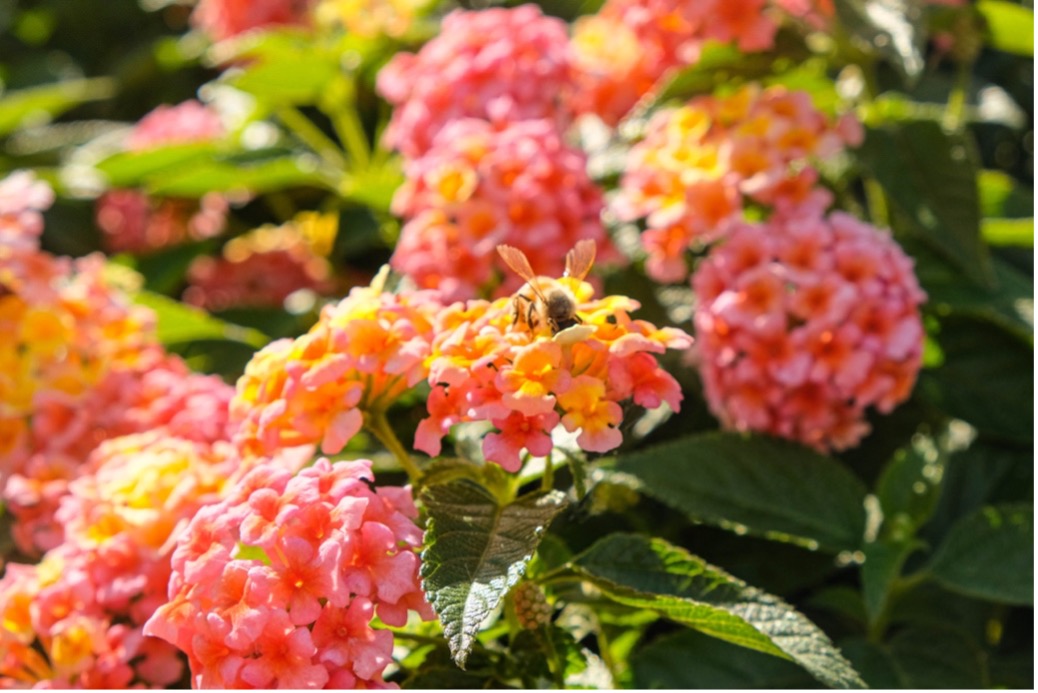|
Plantlife’s No Mow May™ campaign launched again this year on April 29th, 2022. Advocates of the movement claim that you can do more for pollinators by doing less—just lock up your mower for the entire month. However, does letting your lawn go for one month actually help pollinators? What exactly does the campaign entail, and should you get involved? Read on to hear what all the “buzz” is about. Plantlife, a wild plant conservation charity based in the United Kingdom, has asked citizens in the United Kingdom to put away their lawn mowers each May in an effort to increase forage (habitat with food) for pollinators, especially bees. Advocates of the movement encourage members of the community to allow their lawn to grow freely early in the spring (May) so that smaller plants like dandelions and clover can flower. They maintain that this allows pollinators to have a “leg up” on generating their nectar reserves. At the end of May, when the initiative closes, Plantlife encourages participants to complete the “Every Flower Counts” survey. Survey organizers state that the questionnaire serves as a pollinator “health-check” for the participant by assessing:
As an added participation bonus, each participant receives a unique “Personal Nectar Score”, which is meant to be a reflection of how many pollinators the participant’s lawn can feasibly support. The higher your score, the more pollinator-friendly your lawn is. Plantife has made multiple claims in their “press pack” that communicate the benefit of the program to pollinator health, including:
Pollinators add an estimated $18 billion dollars in crop revenue—their importance in food production should not be understated or underappreciated. The global concern for pollinator health and maintenance is likely one reason why the No Mow May movement has some traction here in the US as well. Outlets like NPR, The Guardian, and The New York Times reported on the phenomenon this year. Our participation is not entirely new—adoption of the program in the US began in Appleton, Wisconsin in 2020. The result? No Mow May lawns had better bee diversity and abundance versus manicured lawns. In addition, the rusty patched bumble bee, which has been endangered since 2017, was observed in Appleton again for the first time last year. With promising results like these, it is tempting to think that the No Mo May has no downside, right? Not so fast. Some horticultural educators, such as Pamela Corle-Bennet at The Ohio State University, claim that neglecting mowing for an entire month could kill the grass and encourage weed growth that may increase pesticide use. Additionally, she claims that May might not be the ideal month for nectar-rich plants like clover to bloom in certain geographical areas. For instance she states that in Ohio, clover starts to bloom in June. Griffin Dill, the manager of a laboratory at the University of Maine has concerns about No Mow May, too, but for a different reason—ticks. He worries that the environment that promotes pollinator livelihood would also increase the number of tick encounters they observe in Maine. Bangor Daily News states: “In a perfect world, homeowners could manage yards for tick control and promote pollinator habitat. It’s the unfortunate reality that you can’t do both.” For the record, Bangor is a city in Maine. If you want to protect pollinators this season without encouraging tick presence or risking the health of your grass, the best solution might be to find some middle ground (no pun intended). A nice compromise could be mowing less across the entire flowering season. Research shows that mowing every two weeks could increase the quantity of bees in the landscape. Mowing less often but not stopping altogether also prevents bees from having issues accessing blooms, which can be a concern if grasses are too long. As an alternative, Plantlife suggests having areas where grass is shorter complimented by areas where the lawn can grow a little taller, if possible. To reduce the presence of ticks, shorter grassy areas should be adjacent/closest to where humans walk around the most. If the idea of an ‘untidy’ lawn really does not appeal to you or you are restricted by local ordinances, you can still augment pollinator forage by designing a pollinator garden filled with bee- and other insect- friendly plants. The United States Forest Service provides excellent guidance for designing a pollinator garden. You can also reach out to local Master Gardeners and Extension Specialists in your area who may be able to make suggestions tailored to your particular region. Finally, if using herbicides or insecticides in the landscape, always use them according to the label and do not spray on blooms where bees are visiting. This is especially important in the spring and summer when pollinators are exceptionally active. Ultimately, there are very few downsides to maintaining a pollinator-friendly yard and trying to improve pollinator diversity and abundance is a worthwhile endeavor. However, the way you decide to support pollinator abundance is a personal choice. Whether you mow less, not at all, or put out a pollinator-friendly garden—minimal or even no effort could help pollinating insects in a major way this season.
0 Comments
Your comment will be posted after it is approved.
Leave a Reply. |
Bug Lessons BlogWelcome science communicators and bug nerds!
Interested in being a guest blogger?
Archives
November 2023
Categories
All
|

